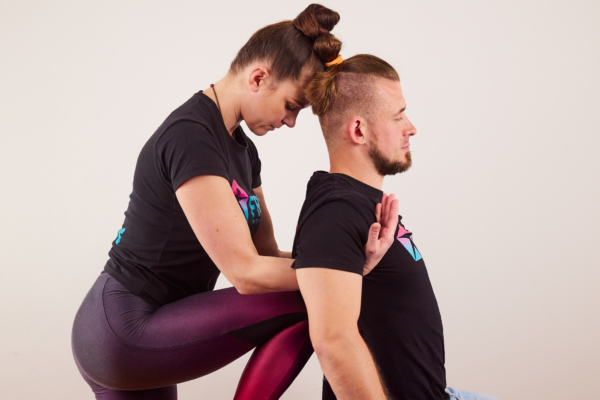
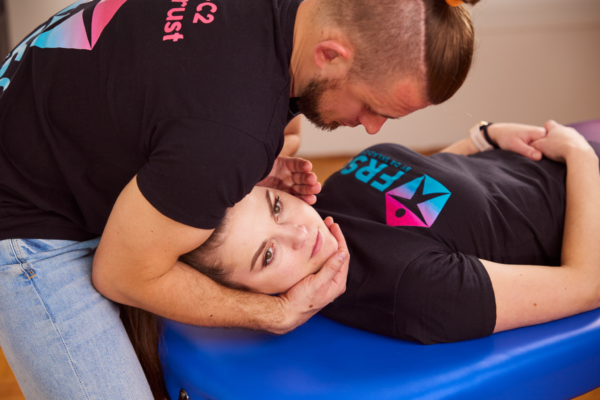
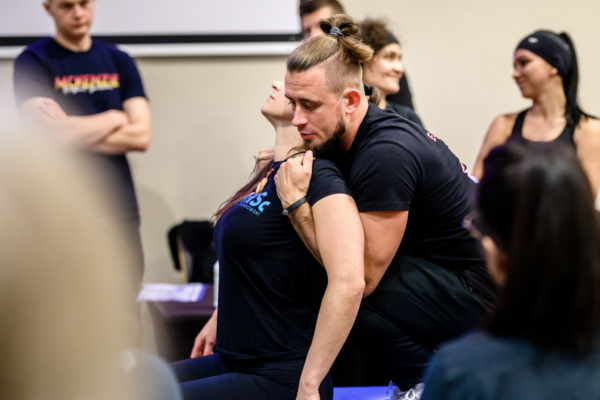
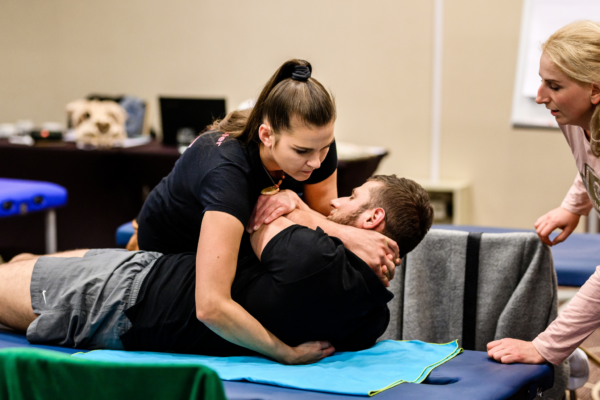
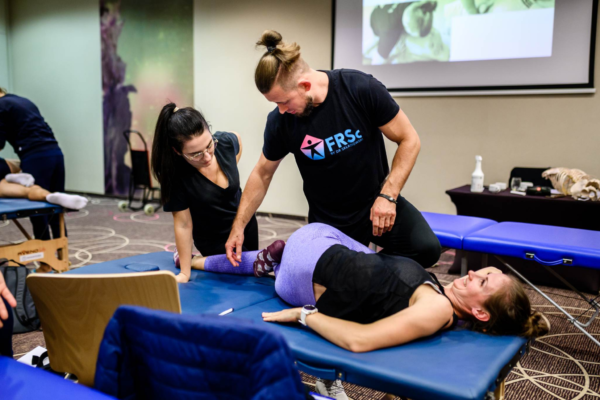
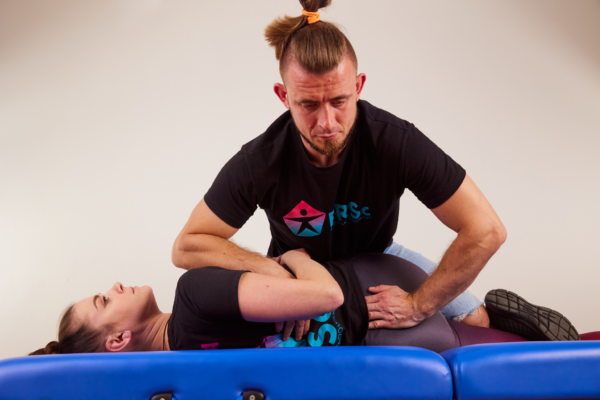
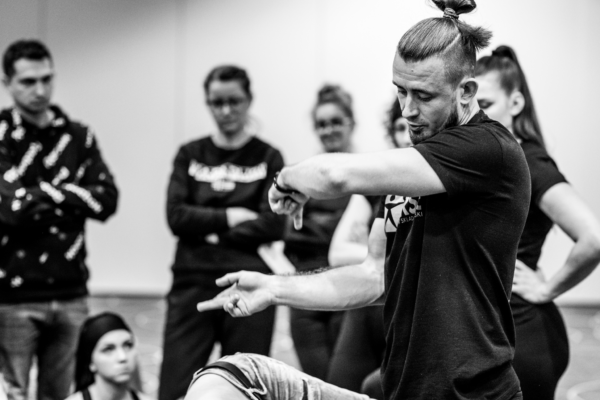
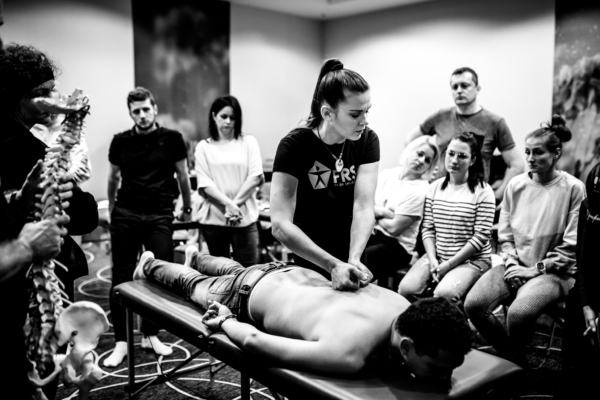
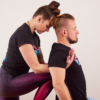
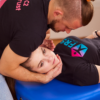
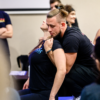
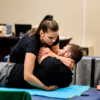
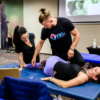
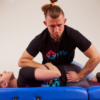
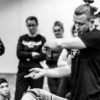
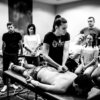
Spine Manipulations and peripheral joints in FRSc
1 950,00 zł
Do you want to effectively deal with back pain and limited joint mobility? Learn proven manipulation techniques that work locally and systemically – without the use of force.
27
hours
45 educational
points
Place:
Spała / Big Cities
Funding
KFS / BUR
Do you want to effectively deal with back pain and limited joint mobility? Learn proven manipulation techniques that work locally and systemically – without the use of force.
Joint manipulation is a world-renowned manual therapy practice that involves performing a quick, precise, yet gentle movement in the joint. They are used for the correction and specific mobilization of joints, and the effect of a well-made technique has a positive effect on the nervous, circulatory, lymphatic and musculoskeletal systems.
Spine and peripheral joints manipulations in FRSc.
The three-day coirse in basic and advanced manipulation techniques is addressed both to therapists with no experience in manual therapy, as well as those who want to expand and consolidate their knowledge and skills under the guidance of experienced instructors.
Over 70% of the training is practical – under the supervision of experienced instructors, you will learn to precisely perform manipulations in real clinical scenarios.
Manipulations are characterized by high angular acceleration with minimal force to achieve cavitation in a specific joint. Manipulations have the advantage of both local and global impact on the patient's body. Locally, they affect a specific spinal segment or a selected peripheral joint, activating it in a specific direction. However, the global aspect represents the most extensive and interesting form of treatment.
Through the central musculoskeletal system, we can influence the functioning of peripheral joints and restore the simplest form of locomotion, which is walking.
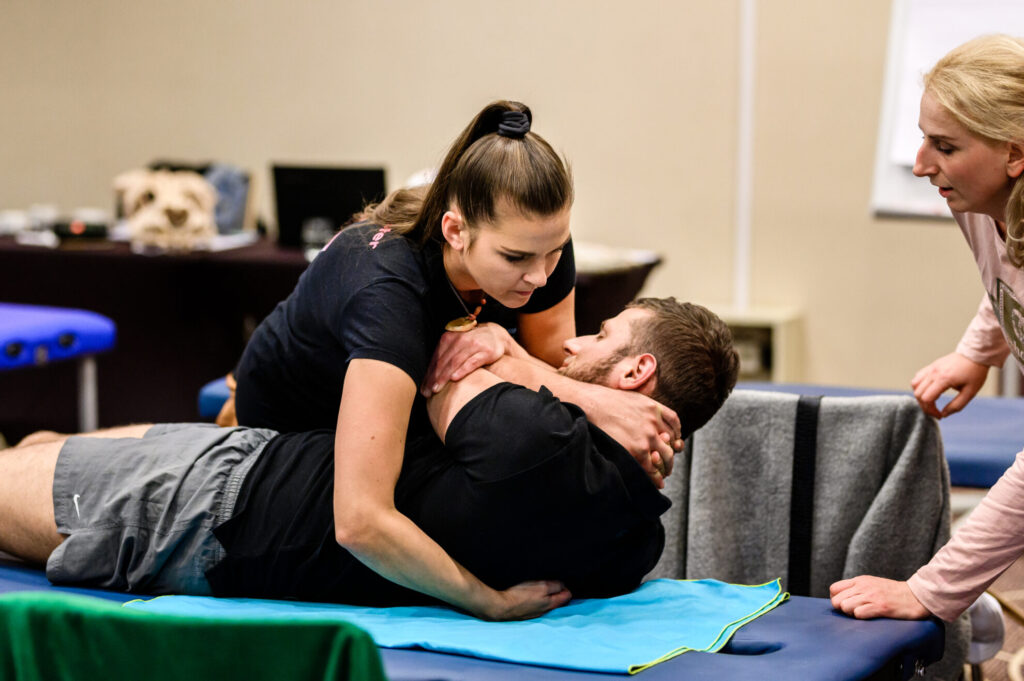
What are joint manipulation techniques in FRSc?
Manipulations in the FRSc model are not just a technique – they are conscious choice of the moment, place and purpose of action, in the full context of the patient's condition. Manipulations in FRSc are integralną częścią całego systemu diagnostyczno-terapeutycznego, based on the analysis of muscle chains (Synkinetic Chains).
- We don't manipulate where it hurts – but where the cause of the disorder is.
- Interview and functional analysis they point us to a key point of action that is often far from the site of symptoms.
- Manipulation can open up therapy, enhance its effect or be the final touch – depending on the purpose of the visit.
What distinguishes joint manipulation techniques in FRSc?
- They are based on the concept of Synkinetic Chains, i.e. the biomechanical-functional relationships in the musculoskeletal system observed in FRSc.
- Diagnosis precedes every action – we take into account, among others, the gait cycle, breathing, sitting, standing, and limb movements.
- Manipulations are just one of the tools – we use them with precision, only when necessary
- We perform and teach manipulations meeting the HVLA criteria (High Velocity Low Amplitude)
- We do not teach chiropractic – despite the similarity of some techniques, our approach has a different clinical purpose and a different context of application
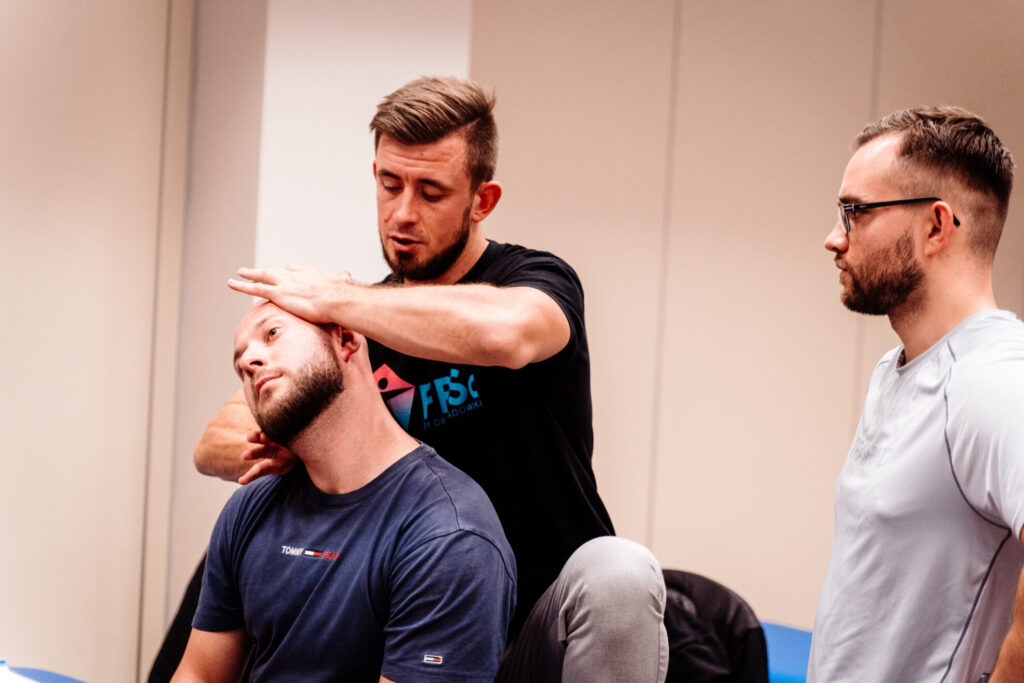
Examples of clinical situations discussed in the course
- Limited mobility of the C2? See what changes with TH9 or the sacrum.
- Unable to perform L1 manipulation? See what changes after working with C1 or C5.
- Decreased strength in the upper limb? The TH9 and TH12 segments may play an important role.
- Limited abduction of the shoulder girdle? A TH12/L1 transition may be the solution.
- Limited mobility of the cervical spine or persistent numbness syndromes in the upper limbs? Learn about the impact of acromioclavicular and sternoclavicular joint mobilization.
- Headaches and dizziness? Manipulation of the C0-C2 junction can play a key role in relieving symptoms.
- Two or three recurring problems? Learn to locate the segment that crosses the synkinetic pathways.
What will you gain by taking the course?
On the course you will learn:
- How to safely and effectively use manipulation techniques,
- When not to manipulate and choose another form of treatment,
- Why the place of "blockage" is often painless and its location is not accidental,
- What manipulation techniques to choose for patients in acute and chronic conditions,
- How to regulate synkinetic chains by manipulation,
- Why manipulation does not require strength, but only skills and practice,
- How to prepare the patient for “hard” techniques,
- What is the role of short, interspinal and interspinal rotators in coupled movements
- … and many other interesting information.
Who is this course for?
We invite physiotherapy students and representatives of medical professions to the course: doctor, dentist, surgeon, physiotherapist, paramedic, massage technician, osteopath, orthopedic technician.
Do you work in another medical profession? Contact us!
09:00 – 09:45
Introduction
09:45 – 10:30
Preparation for the procedure. Spinal Oscillation Techniques:
10:30 – 10:45
Break
10:45 – 11:30
Angular acceleration exercises for Th spine manipulation
11:30 – 12:15
Thoracic spine manipulations
12:15 – 12:30
Break
12:30 – 13:15
Thoracic spine manipulations
13:15 – 14:00
Manipulacje kręgosłupa lędźwiowego i kości krzyżowej
14:00 – 15:00
Break
15:00 – 15:45
Manipulations of the lumbar spine and sacrum
15:45 – 16:30
Examination and manipulation of the L4-L5-S complex
16:30 – 16:45
Break
16:45 – 17:30
Impact of manipulation on synkinetic chains - practice
17:30 – 18:15
Summary of the day
09:00 – 09:45
Repetition of selected manipulation techniques
09:45 – 10:30
Angular acceleration exercises for cervical spine manipulation
10:30 – 10:45
Break
10:45 – 11:30
Manipulations of the cervical spine
11:30 – 12:15
Manipulations of the cervical spine
12:15 – 12:30
Break
12:30 – 13:15
Cervico-thoracic transition manipulation
13:15 – 14:00
Manipulation 1st rib
14:00 – 15:00
Break
15:00 – 15:45
Chain exercises consolidating the effects of manipulation
15:45 – 16:30
Strengthening synkinetic chains as the key to patient health
16:30 – 16:45
Break
16:45 – 17:30
Repetition of selected techniques
17:30 – 18:15
Office examples, Q&A
09:00 – 09:45
Repetition of techniques and their use in the work with synkinetic chains
09:45 – 10:30
Upper limb manipulations
10:30 – 10:45
Break
10:45 – 11:30
Lower limb manipulations
11:30 – 12:15
Examples of work of synkinetic chains
12:15 – 12:30
Break
12:30 – 13:15
Examples of work of synkinetic chains
13:15 – 14:00
Repetition of selected manipulation techniques
14:00 – 14:45
Office examples, Q&A
14:45 – 15:00
SUMMARY AND CLOSING OF THE COURSE

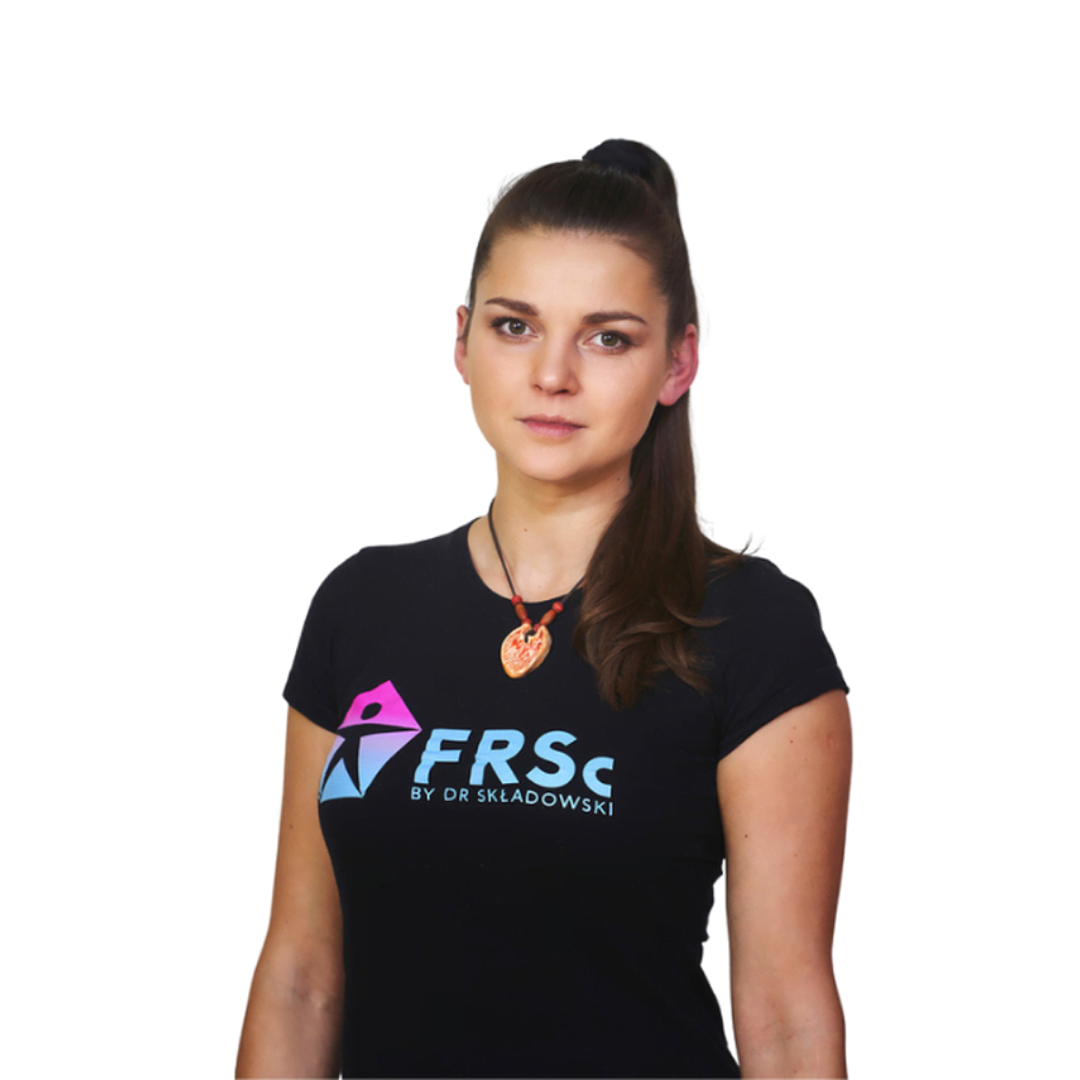
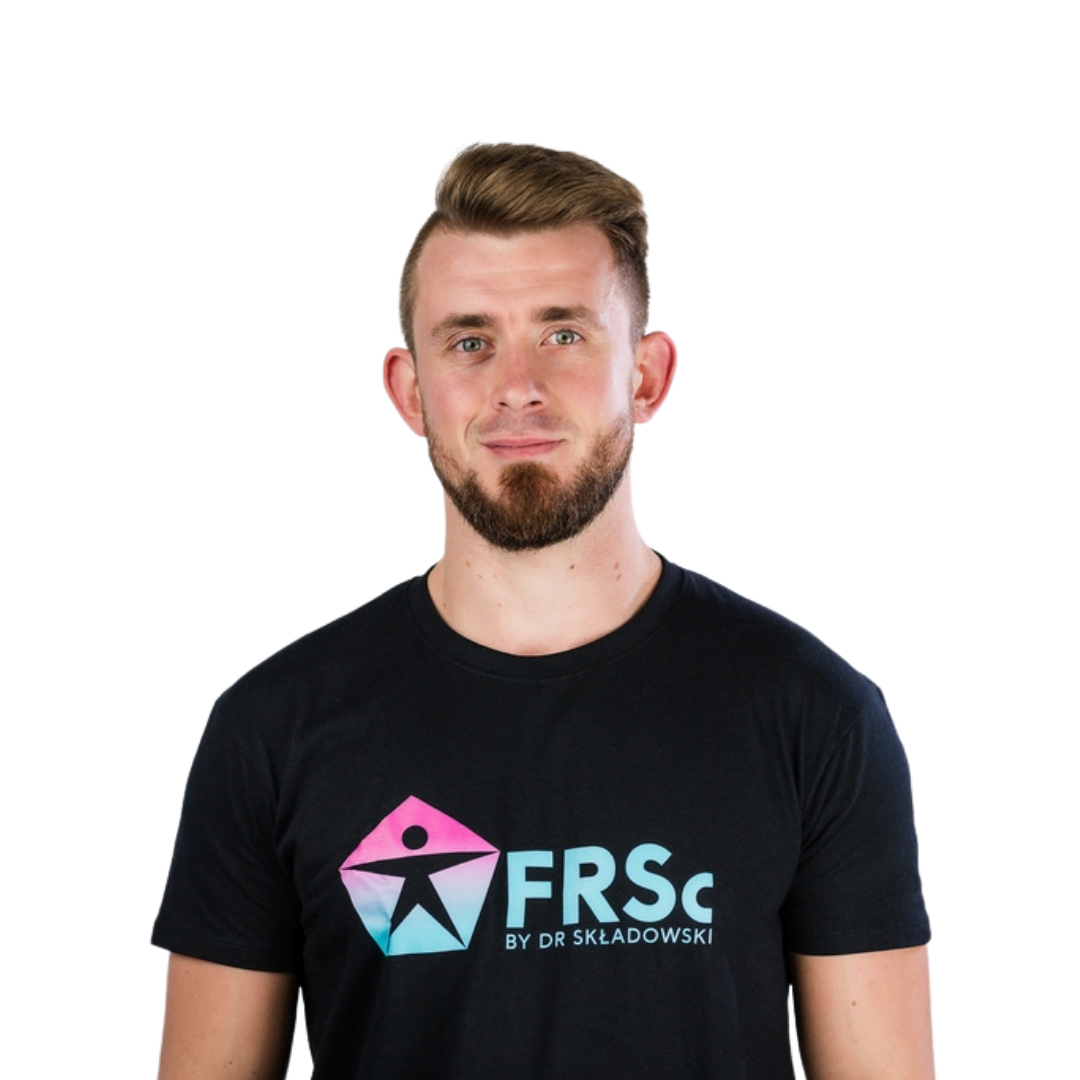

Mat –
Kurs był prowadzony przez Olgę i Bartka. Od strony merytorycznej jak i praktycznej wszystko było dopracowane. Dodatkowo jeśli chodzi o salę była odpowiednio przygotowana, przekąski i kawa super. Nie spodziewałem się nawet tak bogatego skryptu 😀
Jedynie, ale to w mojej opinii można by zrobić taki kurs, ale np. Dwuzjazdowy żeby jeszcze przećwiczyć to chrupanie i czuć się pewniej. Chociaż z drugiej strony na powtórkę jest 50 % 🙂
Bartosz –
Charyzma, cierpliwość i zaangażowanie prowadzących sprzyja zdobywaniu nowych umiejętności. Nowa widza w połączeniu z logicznymi i skutecznymi technikami w końcu pozwoliła zrozumieć mi w pełni sens manipulacji. Ogromna podziękowania dla Eweliny i Bartosza!
Ewelola –
Bardzo wartościowy kurs, Ewelina i Bartek wspaniali i przezdolni w tym co robią i jak przekazują swoją wiedzę i umiejętności. Chyba nie można lepiej trafić 😉 polecam w 10000%!
Asia –
Szkolenie mega profesjonalne pod każdym względem. Bardzo przydatna teoria oraz mnóstwo praktyki która umożliwiła nawet nam kobietom wykonać najtrudniejsze manipulacje. Cieszę się że mogłam uczestniczyć w tym wydarzeniu 🙂 Ewelina, Bartosz dziękuję z całego serducha 🫶
Natalia –
Szkolenie na najwyższym poziomie, wszystkie techniki manipulacji dobrze wytłumaczone i pokazane, dużo praktyki i pozytywna energia 🙂
Monika –
Super szkolenie, dużo dodatkowych informacji, proste i realne techniki do wykonania nawet dla tych bojących manipulować 😅 Fajnie prowadzone, dostosowane również dla płci pięknej, jak wykonać żeby chrupło.
Byłam wcześniej na innych szkoleniach z manipulacji ale te wg FRSc są numer 1.